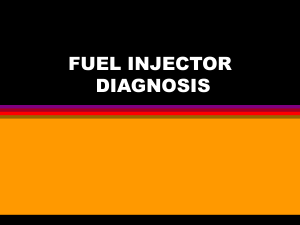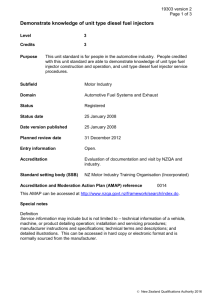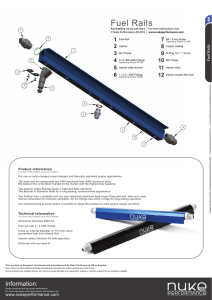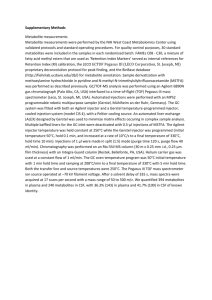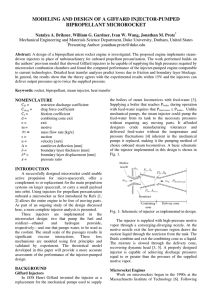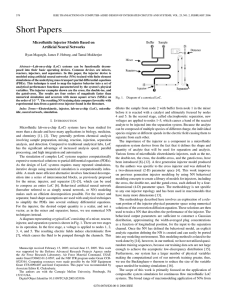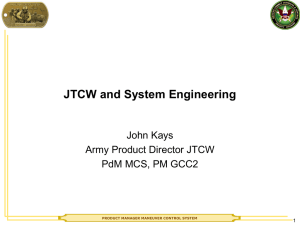Fuel Injector Impedance
advertisement
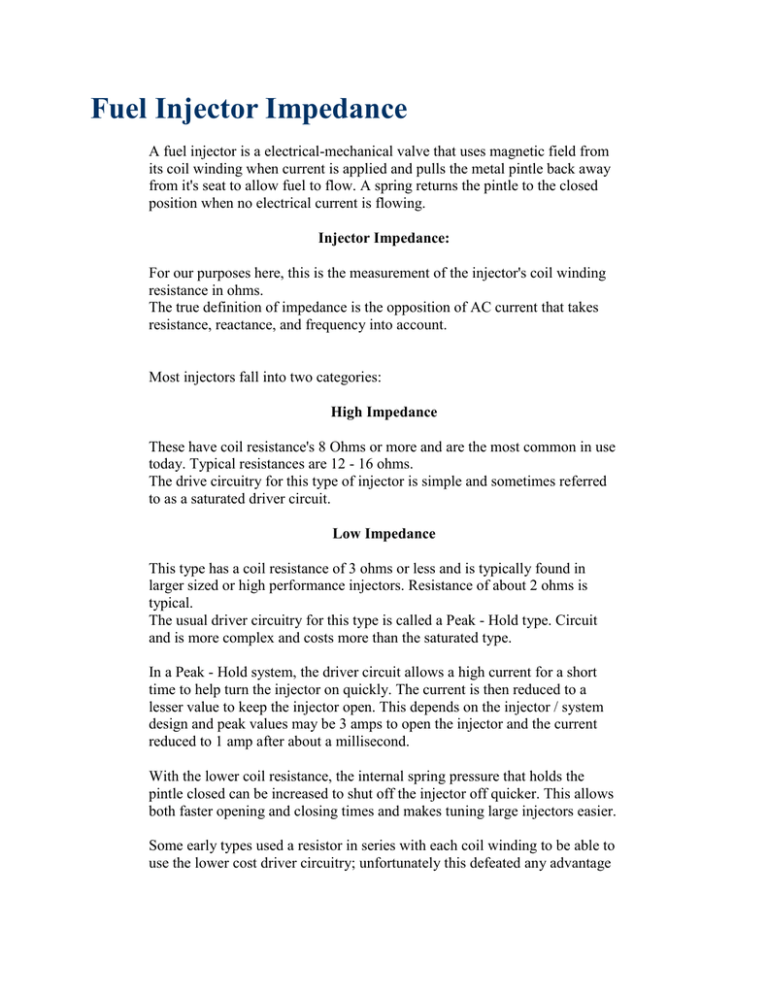
Fuel Injector Impedance A fuel injector is a electrical-mechanical valve that uses magnetic field from its coil winding when current is applied and pulls the metal pintle back away from it's seat to allow fuel to flow. A spring returns the pintle to the closed position when no electrical current is flowing. Injector Impedance: For our purposes here, this is the measurement of the injector's coil winding resistance in ohms. The true definition of impedance is the opposition of AC current that takes resistance, reactance, and frequency into account. Most injectors fall into two categories: High Impedance These have coil resistance's 8 Ohms or more and are the most common in use today. Typical resistances are 12 - 16 ohms. The drive circuitry for this type of injector is simple and sometimes referred to as a saturated driver circuit. Low Impedance This type has a coil resistance of 3 ohms or less and is typically found in larger sized or high performance injectors. Resistance of about 2 ohms is typical. The usual driver circuitry for this type is called a Peak - Hold type. Circuit and is more complex and costs more than the saturated type. In a Peak - Hold system, the driver circuit allows a high current for a short time to help turn the injector on quickly. The current is then reduced to a lesser value to keep the injector open. This depends on the injector / system design and peak values may be 3 amps to open the injector and the current reduced to 1 amp after about a millisecond. With the lower coil resistance, the internal spring pressure that holds the pintle closed can be increased to shut off the injector off quicker. This allows both faster opening and closing times and makes tuning large injectors easier. Some early types used a resistor in series with each coil winding to be able to use the lower cost driver circuitry; unfortunately this defeated any advantage to the low impedance injector design. Another important function of the Peak-Hold circuit is to reduce the power requirements to keep the coil from overheating. Since most injectors use the gasoline flowing through them to help cool the coil, it may not be a wise idea to overheat them. For those who like some numbers for comparison. Assume the following: Injector resistance of 2 ohms. Duty cycle of 50%. Injector fires every 6 milliseconds. If the injector is run in a saturated mode, (with no form of current limiting) the coil dissipation would be about 47 watts. Take the same injector running with a peak/hold circuit, (with a 3 amp peak current for 1 millisecond and a 1 amp hold current), the coil dissipation will be about 11.5 watts. As you can see, there is a large difference in power dissipated between the two types. It is apparent that using a low impedance injector without some form of current limiting. Some exceptions There are a few injectors out there whose resistance falls between the high and low impedance categories listed above. One notable group includes the largest injectors commercially available, (1600 cc/min). They have 4.7 ohm coils. Some of the older Porsche top-feed Bosch injectors are about 4.7 ohms. A couple of older side-feed injectors fit into this category also.
